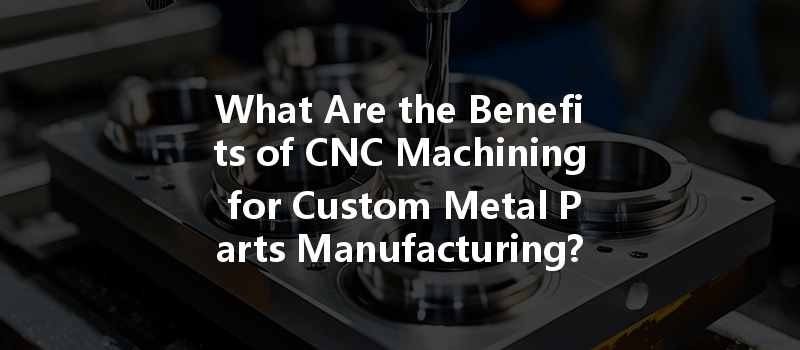Did you know that the global CNC machining market is expected to reach USD 100 billion by 2025? This staggering growth highlights the increasing reliance of various industries on CNC (Computer Numerical Control) machining for precision engineering. As manufacturing processes evolve, businesses are continuously seeking ways to improve efficiency and reduce production costs. This is where CNC machining for custom metal parts comes into play, offering unmatched precision and adaptability that can significantly enhance the manufacturing landscape.
In this comprehensive blog, we will explore the myriad benefits of CNC machining for the manufacturing of custom metal parts. Whether you are an engineer, a small business owner, or a procurement officer, understanding how CNC technology can revolutionize your production process will empower your decision-making.
—
What is CNC Machining?
CNC machining is a subtractive manufacturing process that utilizes computerized controls to dictate the movement of machinery and tools for the production of components. Unlike manual machining, where the operator controls the tools directly, CNC machining uses a pre-programmed software to manage the machinery. This allows for greater precision and the ability to produce complex shapes that would be impossible or impractical to create manually.
Key Components of CNC Machining
Precision and Accuracy
One of the key benefits of CNC machining is its ability to produce components with astounding precision. Tolerances can be as tight as ±0.005 inches, which is crucial for industries where even the minutest deviation can lead to failure. This consistency in manufacturing reduces waste and ensures the final product meets the specifications required by clients.

Versatility in Materials
CNC machining can work with a wide range of materials, including various metals such as aluminum, stainless steel, brass, and titanium. This versatility allows businesses to explore options and choose the best materials for their specific requirements, ensuring that custom parts can be tailored to function optimally in their designated applications.
Efficiency in Production
The automation of CNC machining leads to increased efficiency in manufacturing processes. Once the machine is programmed, it can operate for hours on end with minimal human intervention, vastly reducing production times. In addition, the repeatability of CNC machines allows for mass production without variations in quality, which is particularly beneficial for businesses needing consistent output.
Aerospace Industry
CNC machining plays a critical role in the aerospace sector, where engineers require complex components made from high-strength materials like titanium and aluminum. The high precision needed in this industry ensures that safety standards are met, while also allowing for innovations in design and functionality.
Automotive Industry
From custom engine components to intricate interiors, the automotive industry thrives on CNC machining for creating parts that meet stringent regulatory and performance metrics. CNC technology enables rapid prototyping and the ability to create lightweight yet strong parts, factors that are increasingly important in today’s economy.
Medical Devices
The medical device industry depends on precision-engineered parts to ensure the safety and efficacy of its products. CNC machining allows for the production of custom metal components for surgical instruments, implants, and diagnostic devices, meeting the strict regulatory standards set by agencies like the FDA.
The Programming Process
The journey of CNC machining begins with the design phase. Engineers create detailed specifications and 3D models using CAD software. These models are then converted into G-code through CAM software, translating the design into a language the CNC machine can understand.
The Machining Process
Once programmed, the CNC machine cuts, shapes, or assembles materials according to the G-code instructions. Various tools can be attached to the machine to execute different tasks, from cutting and milling to engraving.
Quality Control Measures
Post-machining, a series of quality control checks ensure that the final product adheres to design specifications. Techniques such as coordinate measuring machines (CMM) and laser scanning are often employed to verify precision.
Factors to Consider
When selecting a CNC machining service, consider their expertise, equipment capabilities, and turnaround time. A provider that specializes in custom metal parts will be more adept at meeting your unique needs.
Customization Capabilities
Evaluate the extent of customization they can offer. A strong CNC partner should allow you to tailor your product specifications without sacrificing quality or performance.
Cost vs. Quality
While it may be tempting to opt for the lowest bidder, the cost should always align with quality expectations. Understand that cheaper services may compromise on precision or materials, ultimately impacting the project.
Automation and AI Integration
The rise of automation, including AI and machine learning technologies, is expected to transform the CNC machining landscape. These innovations can lead to enhanced efficiency, allowing machines to predict maintenance needs and reduce downtime.
Sustainability and Materials
As industries become more environmentally conscious, requests for sustainable materials and processes are increasing. CNC machining is poised to adapt to these trends by incorporating biodegradable materials and energy-efficient practices.
Additive Manufacturing and CNC
The combination of CNC machining and additive manufacturing (3D printing) is creating new avenues for manufacturing custom parts. This fusion allows for more flexibility in design and the potential to reduce waste dramatically.
In summary, CNC machining stands as a pillar of modern manufacturing, particularly for the custom metal parts industry. From its unmatched precision and versatility to its efficiency and ability to integrate cutting-edge technology, CNC machining provides solutions that enhance production capabilities across various industries.
As we have explored, choosing CNC machining for custom metal parts offers numerous advantages—affording an edge in today’s competitive market. By understanding how to navigate this landscape and identify the right machining service, businesses can leverage CNC technology to produce high-quality, cost-effective parts tailored to their needs.
As the manufacturing landscape continues to evolve, keeping abreast of these developments in CNC machining is not just beneficial; it is essential. The insights drawn from this blog underscore the importance of this pivotal technology in shaping the future of production. Remember, investing in CNC machining is more than just acquiring a service; it’s a strategic move towards innovating your production processes and meeting modern demands.






